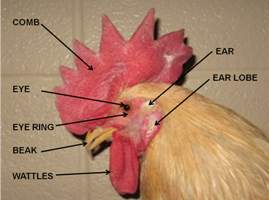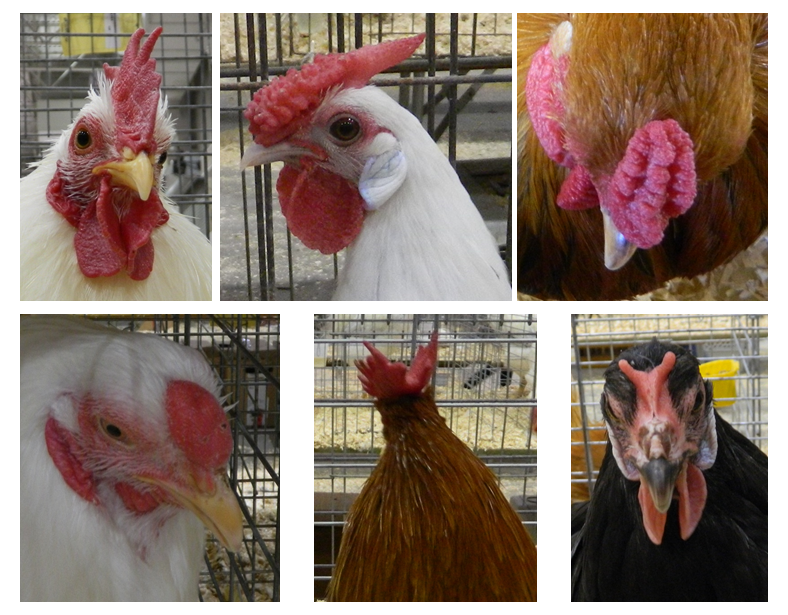Written by: Dr. Jacquie Jacob, University of Kentucky
The basic external parts of a chicken include the comb, beak, wattles, ears, earlobes, eyes, eye rings, wings, tail, thighs, hocks, shanks, spurs, claws and toes. As Figures 1 and 2 show, both male and female chickens have these basic parts. The differences between males and females include the size of the comb and wattles, the size of the spurs (in older birds), and the characteristics of the hackle and cape feathers. Hackle and cape feathers of males have pointed ends, whereas those of females have rounded ends. In addition, males have sickle feathers in their tails and hackle feathers on their backs, and females do not.
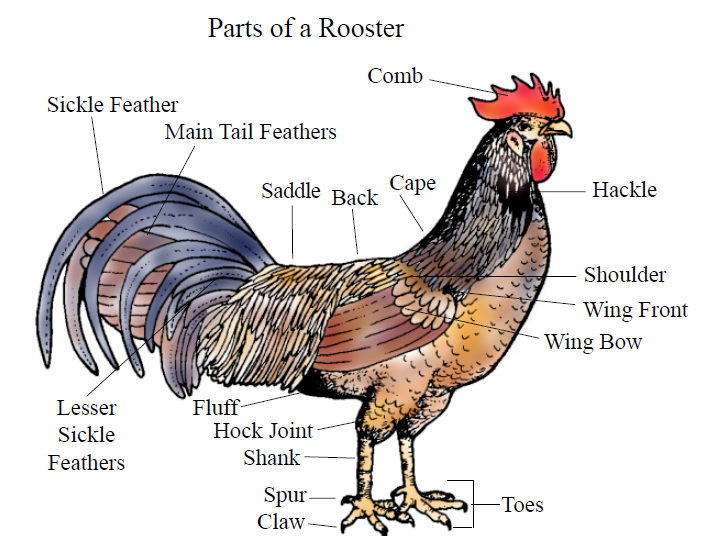
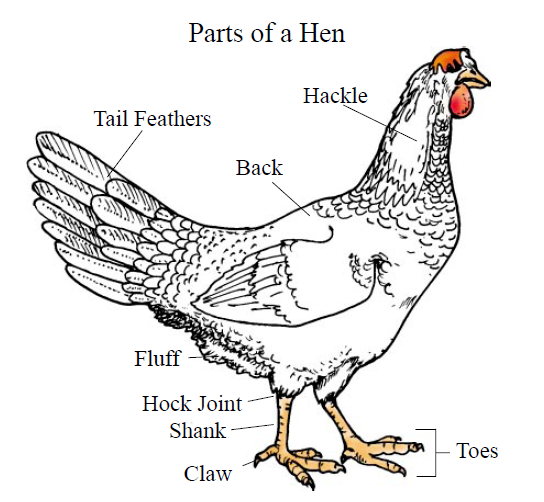
A chicken’s wing has several flight feathers. As Figure 3 shows, the axial feather separates the primary feathers and secondary feathers. When a hen molts, she starts losing feathers from the axial feather out.
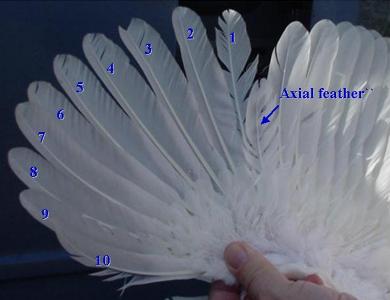
The thigh of a chicken is the upper part of the leg attached to the body of the bird. The thigh ends at the lower leg (drumstick). The thigh is connected to the shank (foot) at the hock joint, which is the equivalent of the ankle in humans. Chickens stand and walk on their toes. Most chickens have three toes projecting forward and one projecting back, sometimes referred to as the claw. A few breeds, however, have five toes on each foot. Some breeds also have feathers on their shanks and toes. Figures 4 and 5 compare the legs of a female chicken and a male chicken, and Figures 6 compares the bones in a chicken leg with those of a human leg.

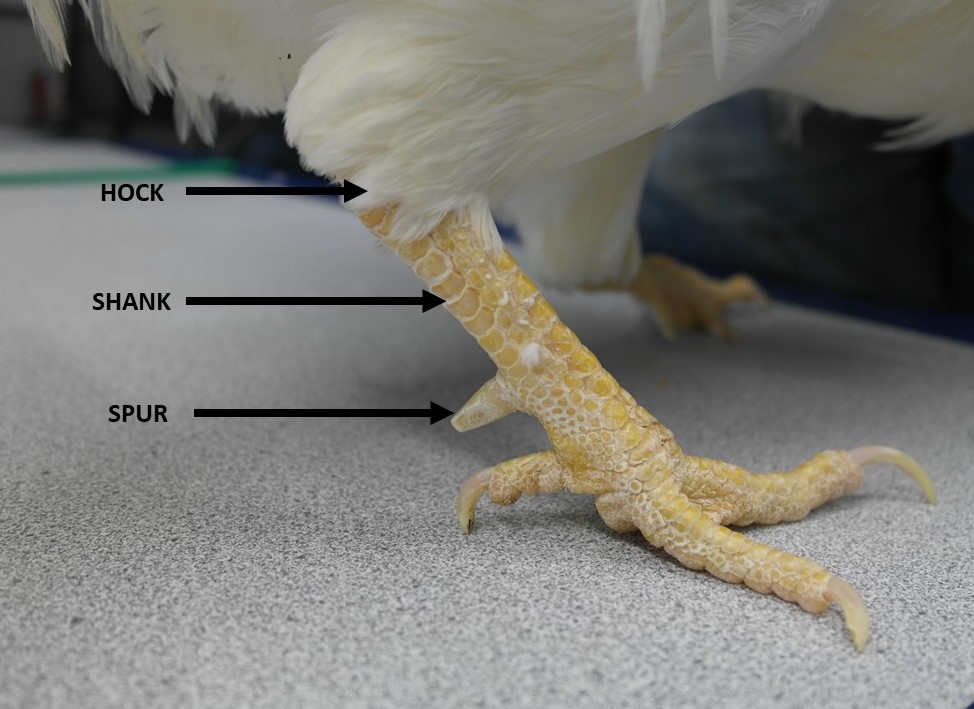
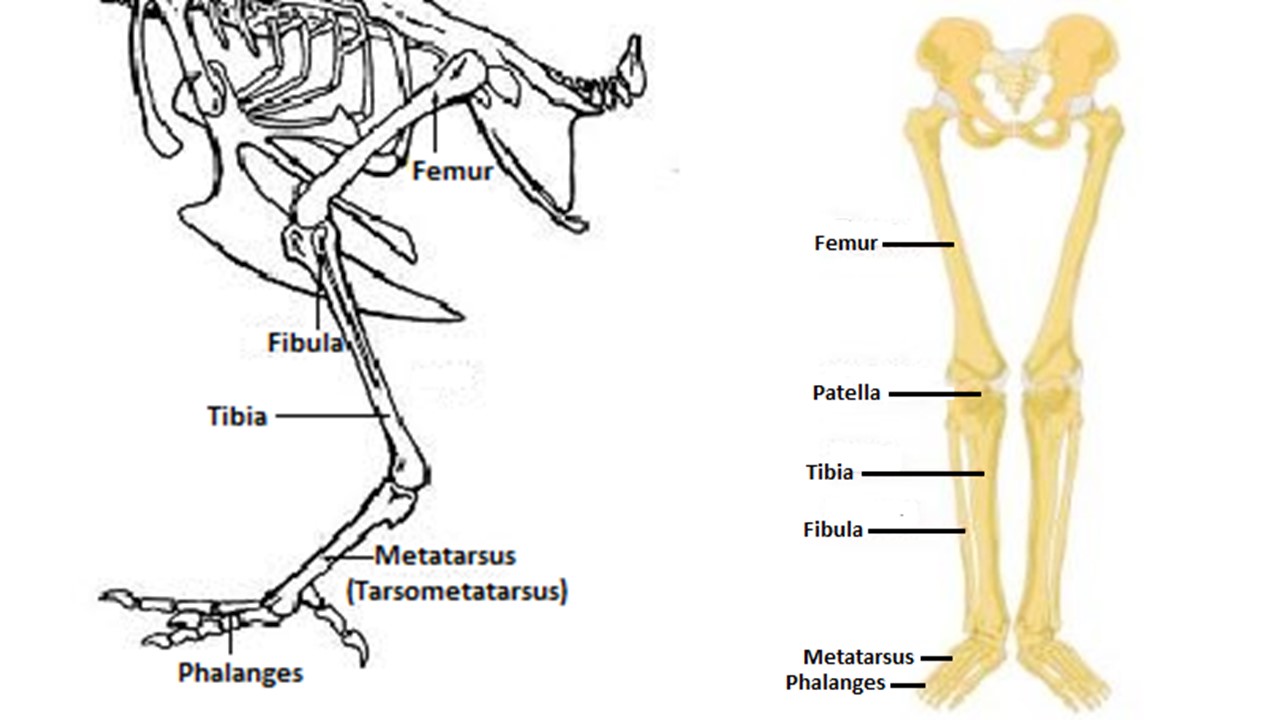
A chicken’s head has several parts, as shown in Figure 7. One of the most prominent features on a chicken’s head is the comb. Figure 8 shows different types of combs. A chicken’s comb and wattles are red, soft, and warm. Chickens do not have external ears as humans do. The ears are just openings into the ear canal, and each is protected by a covering of feathers. The earlobe is a specialized skin located below the ear. The color of the earlobe depends on the breed of chicken. The two possible colors are red and white. The eyeball is covered by the eye ring. When the eye is open, the eye ring appears as a ring of skin around the eye (thus the name eye ring).
